Ask a question, get an answer ASAP!
GET A QUOTE
Tire Patch Cost
Service Location
Price range for all vehicles
(171,627)Flat tires are an inevitable part of owning a car. Changing a flat tire can be difficult and requires several different tools that you might not have handy.
Fix-a-Flat is a convenient option for plugging the hole in the tire once you’ve identified where the damage is located. It allows you to drive your car safely to the closest gas station where the tire can be filled and repaired properly. It is advisable to keep a can of Fix-a-Flat in your car at all times so that you’re not stranded the next time your tires lose air due to a hole or some other type of damage.
If your car is equipped with tire pressure warnings, please consult the manufacturer before you use an aerosol tire sealer like Fix-a-Flat.
Here's how to fix a flat tire using Fix-a-Flat:
Gather the correct materials - In order to use Fix-a-Flat, you will need to purchase one can of Fix-a-Flat
Stop the car in a safe location - If you’re driving, pull over to a safe location on the side of the road or into a parking lot.
Identify the source of the leak - Once you realize your tire is losing air, it’s important to identify where the leak is coming from. That way, you can decide whether Fix-a-Flat is the appropriate method for repairing your tire issue.
Identify the damaged tire - The damaged tire will look visibly deflated compared to the other tires.
Warning: Fix-a-Flat is not designed to repair completely flat tires. It is also not designed to repair large tears or cracks in sidewall. It should only be used as a temporary solution until the tire can be replaced or a spare tire can be installed. If the tire is too damaged, get a certified mechanic, such as one from YourMechanic to put on a spare tire instead.
If the tire is too damaged, get a certified mechanic, such as one from YourMechanic to put on a spare tire instead.
Look for the tear or hole in the tire - Sometimes, this spot will be obvious. If you’ve driven the tire over a nail or if some other object has torn a hole in the tire, then you will probably be able to find the hole easily. Make sure that the damage is not too extensive and not larger than ¼ of an inch.
Open the tire valve - Unscrew the cap of the tire valve and place it somewhere easy to find because you will need to put it back on after repairing the tire.
Prepare to seal the tire - Shake the can of Fix-a-Flat to get it ready for use.
Attach the Fix-a-Flat nozzle - Screw the Fix-a-Flat nozzle onto the tire valve. Make sure that it is secure. You will begin to hear air inflating the tire when the nozzle is completely secured on the valve.
Warning: Fix-a-Flat is designed so that the entire can is emptied into one single tire. Do not use the same can on several different tires.
Close the tire valve - After the can is completely emptied into the tire, unscrew the nozzle and replace the valve cap on the tire.
Drive the car immediately - It’s important that you drive your car immediately after using Fix-a-Flat to allow the tire pressure to increase and distribute the sealant evenly on the tire. You should only drive the car about 2 to 4 miles after sealing the tire.
Inflate tire to recommended psi level - The psi level of a tire is the manufacturer's recommended pounds per square inch level for a tire. After using Fix-a-Flat, you may still need to inflate the tire with air so that it reaches the recommended psi level.
Drive to the nearest air pump
- Any nearby gas station should have air pump.
Fill the tire - Pump air into the tire up to the recommended psi level, checking it frequently with a tire gauge.
Tip: Refer to your car’s manual or check the manufacturer’s website to find the recommended psi level for your car’s tires. The correct air pressure will also be listed on the tire placard attached to the vehicle door edge, doorpost, glove box door or fuel door.
Using Fix-a-Flat is a temporary solution and your tire will need to be replaced or repaired by a professional. It’s important to let the person repairing your tire know that you’ve used Fix-a-Flat so that they know that your tire is sealed with aerosol gases and not just air.
If you notice that some of your car’s tires show uneven wear or if they lose contact with the road, get a professional mechanic, such as one from YourMeechanic, to inspect them as soon as possible.
The most popular service booked by readers of this article is Tire Patch. YourMechanic’s technicians bring the dealership to you by performing this job at your home or office 7-days a week between 7AM-9PM. We currently cover over 2,000 cities and have 100k+ 5-star reviews... LEARN MORE
YourMechanic’s technicians bring the dealership to you by performing this job at your home or office 7-days a week between 7AM-9PM. We currently cover over 2,000 cities and have 100k+ 5-star reviews... LEARN MORE
SEE PRICING & SCHEDULING
flat tires
The statements expressed above are only for informational purposes and should be independently verified. Please see our terms of service for more details
4.2 Average Rating
Service Hours
7 AM - 9 PM
7 days a week
Phone Number
1 (855) 347-2779
Phone Hours
Mon - Fri / 6 AM - 5 PM PST
Sat - Sun / 7 AM - 4 PM PST
Address
We come to you at no extra charge
Guarantee
12-month/12,000-mile warranty
Our certified mobile mechanics perform over 600 services, including diagnostics, brakes, oil changes, scheduled mileage maintenances, and will come to you with all necessary parts and tools.
Get a fair & transparent quote instantly before booking.
(
171,627
)
161,099
161,099
SEE REVIEWS NEAR ME
11 years of experience
585 reviews
Request Nicholas
Nicholas
11 years of experience
Request Nicholas
by Robert
Honda Accord L4-2.3L - Oil Change - Raleigh, North Carolina
Knocked it out in no time!
by Marc
Honda Pilot - Car is not starting - Durham, North Carolina
came early, done in an hour. did a great job on my 12 year old vehicle. highly recommended!
8 years of experience
23 reviews
Request Nestor
Nestor
8 years of experience
Request Nestor
by Denice
Hyundai Santa Fe V6-2.7L - Tire Patch (Driver Side Front) - Boise, Idaho
Right on time, very knowledgeable and helpful on what needs to be done next.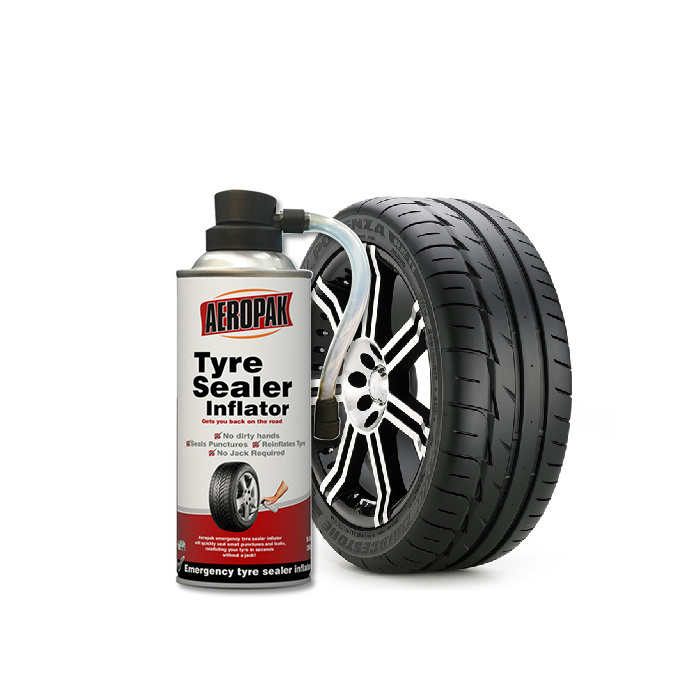 Thanks!
Thanks!
21 years of experience
1068 reviews
Request Pardeep
Pardeep
21 years of experience
Request Pardeep
by Ellen
Hyundai Santa Fe V6-2.7L - Tire Patch - San Jose, California
Very quick and efficiento
27 years of experience
275 reviews
Request Nazareth
Nazareth
27 years of experience
Request Nazareth
by Jesse
Chevrolet Express 3500 V8-6.0L - Car is not starting - Duarte, California
Very professional, highly recommended.
Our certified mobile mechanics make house calls in over 2,000 U.S. cities. Fast, free online quotes for your car repair.
GET A QUOTE
GET A QUOTE
How to Know What Tires to Buy
Your Your vehicle requires traction in order to accelerate, brake efficiently, and maintain control when you are steering. In order to do those things well, you need to own good tires on your vehicle. There are hundreds of different tire...
In order to do those things well, you need to own good tires on your vehicle. There are hundreds of different tire...
How to Make Your Car Tires Last Longer
A new set of car tires is expensive. Make them last longer with frequent inspections, keeping them clean, and making sure the air pressure is correct.
How to Rotate Car Tires
Car tire rotation reduces blowouts and other tire-related car accidents. Tires should be rotated every 5k-6k miles or at every other oil change.
Passenger's side wheel vibrates
It sounds like you have a faulty wheel bearing. The vibration goes away when you turn because you are loading the bearing and taking up all of the play. Wheel bearings can be checked by jacking up the vehicle, and...
Uneven tire wear and excessive shaking in the steering wheel once hitting highway speeds.
Hi there, thanks for writing in. Based on your description of the symptoms and tire wear, it seems that your mechanic probably is correct. When the tie rod and ball joints (https://www.yourmechanic.com/article/symptoms-of-a-bad-or-failing-tie-rod-end) are damaged, they will cause the suspension to...
Bottome of vehicle makes a helicopter sound when driving at slow speeds
The sound you are hearing is related to the tires moving from what it sounds. The first thing to inspect is proper tire inflation. Tires make strange noises when they are low or damaged. Second needs to be the brakes....
Cities
Services
Estimates
Our service team is available 7 days a week, Monday - Friday from 6 AM to 5 PM PST, Saturday - Sunday 7 AM - 4 PM PST.
1 (855) 347-2779 · [email protected]
Read FAQ
GET A QUOTE
We have all been there—you notice a tire looking flat when you find a small nail or screw embedded in the rubber.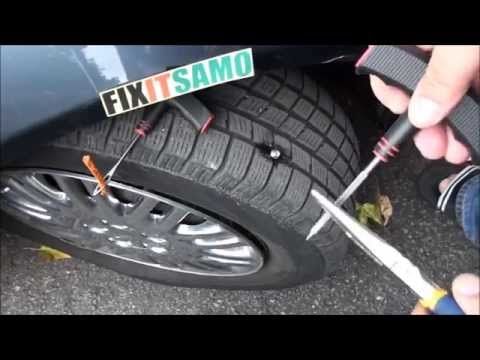 So why do nails consistently puncture tires? How can you tell when your tire has a leak, and what should you do about it? The automotive mechanics at Chapel Hill Tire are here to answer all of your questions about tire patching and flat repairs.
So why do nails consistently puncture tires? How can you tell when your tire has a leak, and what should you do about it? The automotive mechanics at Chapel Hill Tire are here to answer all of your questions about tire patching and flat repairs.
One common question we get from customers is, “How do screws puncture tires?” Whether from roadside construction or tool-filled trucks, nails and screws end up on the road far too often. What confuses drivers most is how they end up in tires. You might think your tire would roll over nails and screws on the road—so why is this such a common problem? There are a few reasons why tires and nails so often clash on the road:
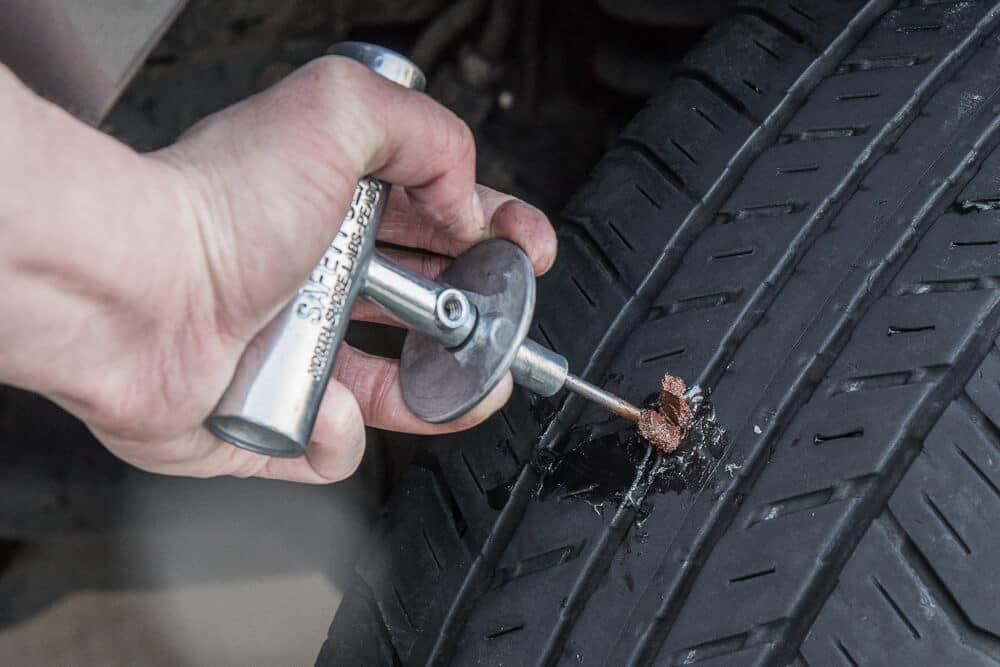
When you begin experiencing tire issues, it can be hard to pinpoint the source of the problem—especially if you are not a professional mechanic. You might find yourself wondering, “Does my tire have a nail in it, or is it something worse?” Here are some clear indicators that you have a nail or screw in your tire:
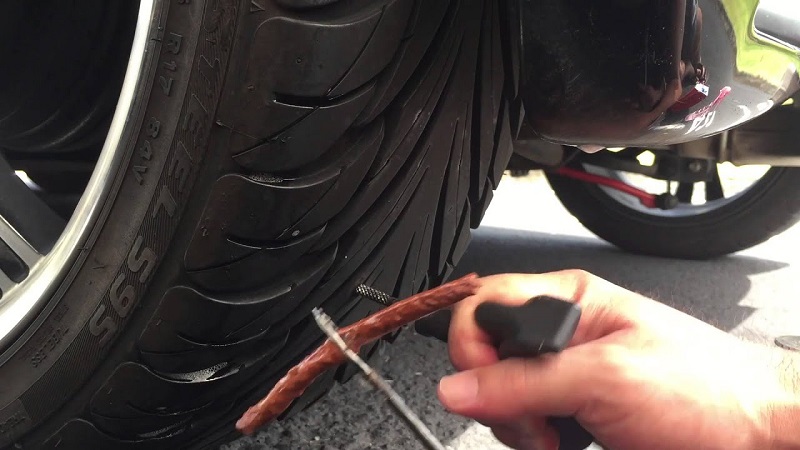 Low tire pressure is common as your tires naturally lose air over time. This is especially true in the winter months when the air inside your tires compresses. However, if you fill your tire with air and find that the low tire pressure light quickly returns—you likely have a puncture in your tire.
Low tire pressure is common as your tires naturally lose air over time. This is especially true in the winter months when the air inside your tires compresses. However, if you fill your tire with air and find that the low tire pressure light quickly returns—you likely have a puncture in your tire.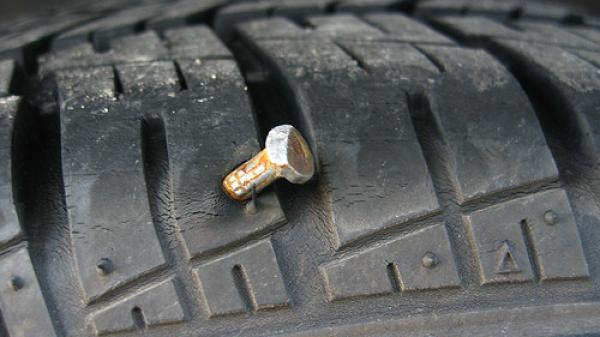
The low tire pressure created by tire punctures can lead to tire damage, low gas mileage, bent rims, and dangerous vehicle handling troubles. Additionally, you may fail your car inspection if your tires are not in tip-top shape. So what can you do when you have a nail in your tire? There are a few possible solutions you can turn to:
Professional Tire Patching ServiceThe best possible solution is to bring your vehicle to an expert for patching service. A professional can quickly find the puncture, remove the nail/screw, patch your tire, and refill your tire with air. This service provides a reliable repair without any of the hassles or risks associated with the alternative solutions. How much does professional tire patching cost? At Chapel Hill Tire, our local tire patching flat repair services are just $25.
How much does professional tire patching cost? At Chapel Hill Tire, our local tire patching flat repair services are just $25.
Some drivers attempt DIY patching, but this is not the best solution for most drivers. Many of these patch kits can cost as much as professional service, and it can be easy to damage the tire while attempting a patch. Not to mention, the patching process can be physically challenging and it often completely empties the air out of your tire—leaving drivers with a tire too flat to bring in for a refill. If you end up having to tow your vehicle, you will find yourself facing a much larger bottom line than the money you saved on a tire patch kit.
Fix-a-FlatPressurized tire patches like Fix-a-Flat and other synthetic solutions can fix tire punctures from nails, but they come with their own set of risks and considerations. Most severely, they have been linked to risks of tire pressure monitoring sensor damage. Additionally, the sealant can create trouble when you need future tire services, which could result in premature tire replacement and extra labor costs. Much like tire patches, these solutions often cost just as much as professional tire patching, so you can save some trouble and money by turning to the experts.
Additionally, the sealant can create trouble when you need future tire services, which could result in premature tire replacement and extra labor costs. Much like tire patches, these solutions often cost just as much as professional tire patching, so you can save some trouble and money by turning to the experts.
When you find a nail in your tire, the experts at Chapel Hill Tire are here to help! Our local mechanics have the tools and experience needed to get your tire fixed in no time. Best of all, we offer coupons, deals, and special discounts for our customers. With our everyday low and transparent prices, you can get affordable, high-quality tire flat repairs without any surprises. Chapel Hill Tire proudly serves the greater Triangle area with our 9 locations across Raleigh, Durham, Apex, Carrboro, and Chapel Hill. You can make your appointment here online or give us a call to get started today!
Back to Resources
adv. rbc.ru
rbc.ru
adv.rbc.ru
adv.rbc.ru
Autonews
TV channel
Pro
Investments
Events
+
New economy
Trends
Real estate
Sport
Style
National projects
City
Crypto
Debating Club
Research
Credit ratings
Franchises
Newspaper
Special projects St.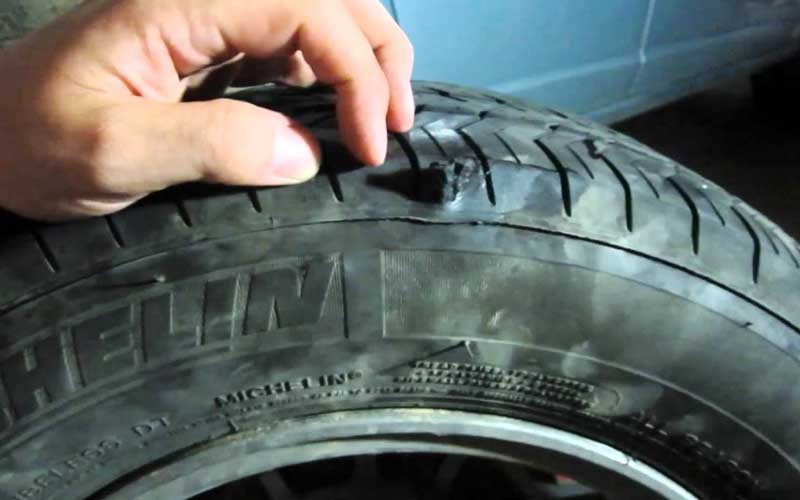 Petersburg
Petersburg
Conferences St. Petersburg
Special projects
Checking counterparties
Library
Podcasts
ESG index
Politics
Economy
Business
Technology and media
Finance
RBC CompanyRBC Life
adv.rbc.ru
Photo: Mikhail Tereshchenko / TASS
adv.rbc.ru
See also
Nail, rebar or sharp stone - sometimes you can damage a tire almost from scratch. First of all, the scale of damage is important, and often rubber can still be repaired. Most often, motorists turn to tire shops for repairs in the middle of autumn or spring - just in the season of replacing summer tires with winter tires and vice versa. In order not to stand in lines, it is worth knowing exactly when to go to the tire shop and when to go to the store.
Most often, motorists turn to tire shops for repairs in the middle of autumn or spring - just in the season of replacing summer tires with winter tires and vice versa. In order not to stand in lines, it is worth knowing exactly when to go to the tire shop and when to go to the store.
The most common "injury" to rubber is a puncture, and it can most often be repaired. Professionals in the nearest service will do it much faster, and your hands will remain clean. But if the puncture caught you in a deserted place, and there is a pump and a tire repair kit with harnesses in the trunk, you can patch up the tire yourself. Most often, when repairing the front tires, the wheel can not even be removed, it is enough to turn the steering wheel in the right direction and find the puncture site.
First, the hole is cleaned with a helical awl, the repair harness is smeared with glue and tucked into the eye of the awl, after which it is inserted into the tire hole. With a sharp movement, the tool is removed, and the tourniquet remains inside and securely clogs the hole. The tails are cut with a knife, but it is recommended to leave about 20 mm. After that, the tire can be inflated and the pressure checked.
The tails are cut with a knife, but it is recommended to leave about 20 mm. After that, the tire can be inflated and the pressure checked.
Repair with tourniquets is not considered long-term, because after some time they dry out and begin to let air through. A more advanced puncture repair method is vulcanization. The hole is sealed with an elastic patch, and the funnel at the puncture site is filled with a special compound. A vulcanizer is put on top, which heats the patch and solders the excess.
Under service conditions, the puncture is also repaired with cord fungus. The puncture site is processed and drilled to roughen. Everything is smeared with glue, after which a fungus is introduced from the inside of the tire, its cap is rolled, and the excess legs are cut off from the outside.
Photo: PA Images / TASS
A puncture can also be repaired with sealant. Many car manufacturers with run flat tubeless tires put compressor repair kits in the car instead of a spare tire - a bottle of pressurized sealant.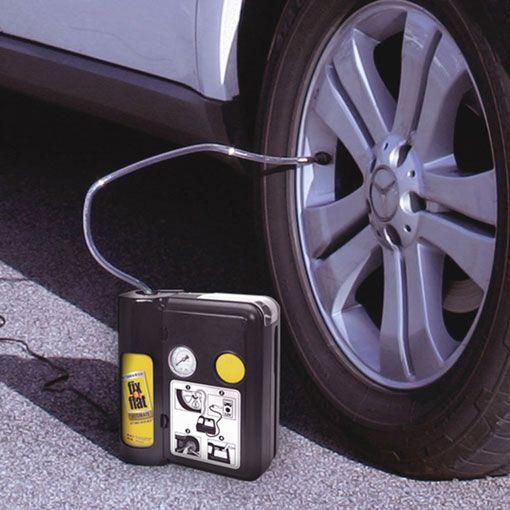 The car is raised on a jack, after which the sealant is pumped into the damaged wheel through the nipple. Next, you need to spin the wheel and pump it up. After repair, the car should be driven a couple of hundred meters to check the tightness of the tire. If it has not recovered, the procedure is repeated.
The car is raised on a jack, after which the sealant is pumped into the damaged wheel through the nipple. Next, you need to spin the wheel and pump it up. After repair, the car should be driven a couple of hundred meters to check the tightness of the tire. If it has not recovered, the procedure is repeated.
It happens that a self-tapping screw or a nail closes the hole in the tire, remaining inside. Do not rush to pull it out - until the pressure drops, you can safely get to the service for vulcanization. Sometimes the wheel begins to blow off a few weeks after the self-tapping screw got into it. Therefore, it is better to check tire pressure periodically, and if the pressure sensor lights up, you should at least visually inspect the tire for a nail head.
A bump or bulge most often occurs on the side of a tire after hitting an obstacle or hitting a hole at speed. From the impact, the sidewall carcass threads are damaged, the tire ceases to hold the load and pressure, swelling appears.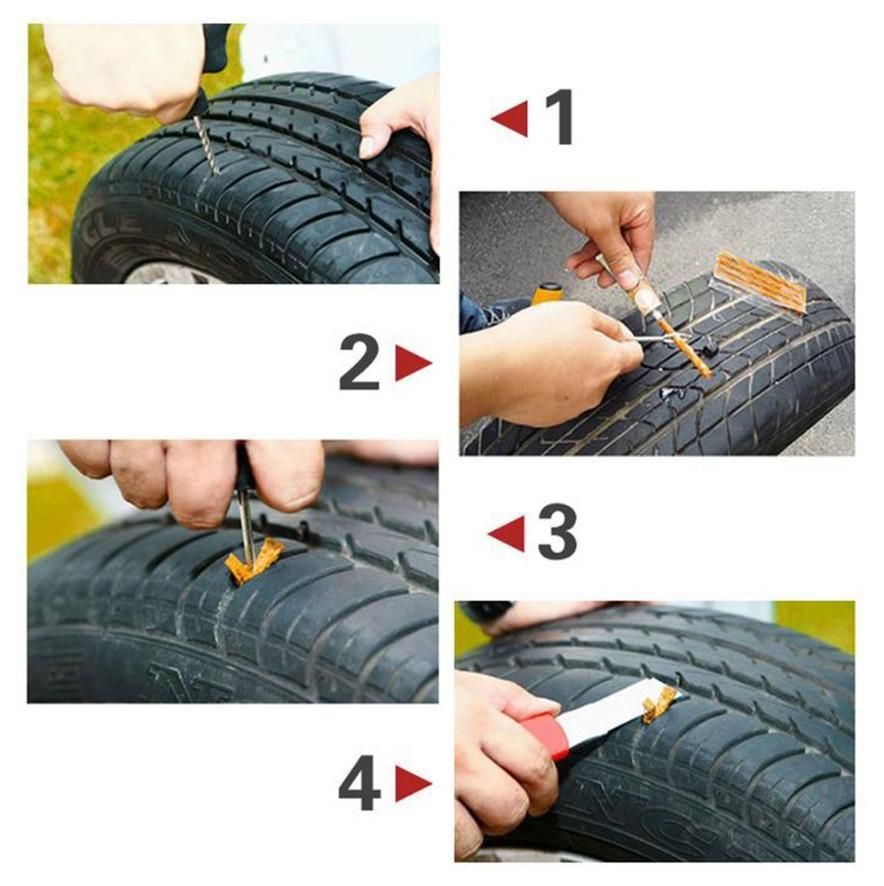 Any small bump eventually turns into a larger one, and with such a defect, the wheel can burst at any time. This is a direct safety hazard because a sudden flat tire can cause loss of control and a road accident.
Any small bump eventually turns into a larger one, and with such a defect, the wheel can burst at any time. This is a direct safety hazard because a sudden flat tire can cause loss of control and a road accident.
Some bulges can be repaired, but no patch will ever restore a tire to factory stiffness. The ideal option in this case is to replace the tire. If a hernia has appeared on the tread, then you can extend the life of the tire with the help of cord patches - ready-to-use patches with an adhesive layer. But if swelling is found on the sidewall, the likelihood of repair is minimal, the wheel is easier to change. Blisters on low profile tires are generally not repairable.
Only car service professionals can repair a side cut. Cord patches will be needed to repair the damage, but after some time the wheel will still have to be changed. This method will work only if the gap is not in the shoulder area of the tire, then no one will repair it.
In general, cuts or punctures, unlike punctures, are considered non-repairable, since the integrity of the frame is violated. And breakdowns do occur on the go, when the tire abruptly loses pressure and has time to make only a few turns “on the rims” before it comes to a complete stop. In this situation, the cord breaks and the layers of the tire are destroyed. Even if it is possible to close the hole, it is not recommended to use such a weakened tire.
And breakdowns do occur on the go, when the tire abruptly loses pressure and has time to make only a few turns “on the rims” before it comes to a complete stop. In this situation, the cord breaks and the layers of the tire are destroyed. Even if it is possible to close the hole, it is not recommended to use such a weakened tire.
Photo: Mikhail Pletsky / Russian Look
Cracks, sidewall abrasions and unprofessional tire fitting can also lead to tire problems. Cracks can occur as a result of improper storage of tires. Their danger is that moisture begins to flow to the cord, and this already renders the frame unusable. Air can also escape through cracks. Cracks cannot be repaired and tires will not last long. A tire with cracks is deformed, blistered, and may even break while driving.
Rubbing against curbs or driving on uneven roadsides can damage the tire sidewall. When driving like this, it is worth inspecting the tires for damage regularly. If a slight wear is found, the wheels can be swapped, which will slightly extend their service life and allow you to delay the purchase of new ones.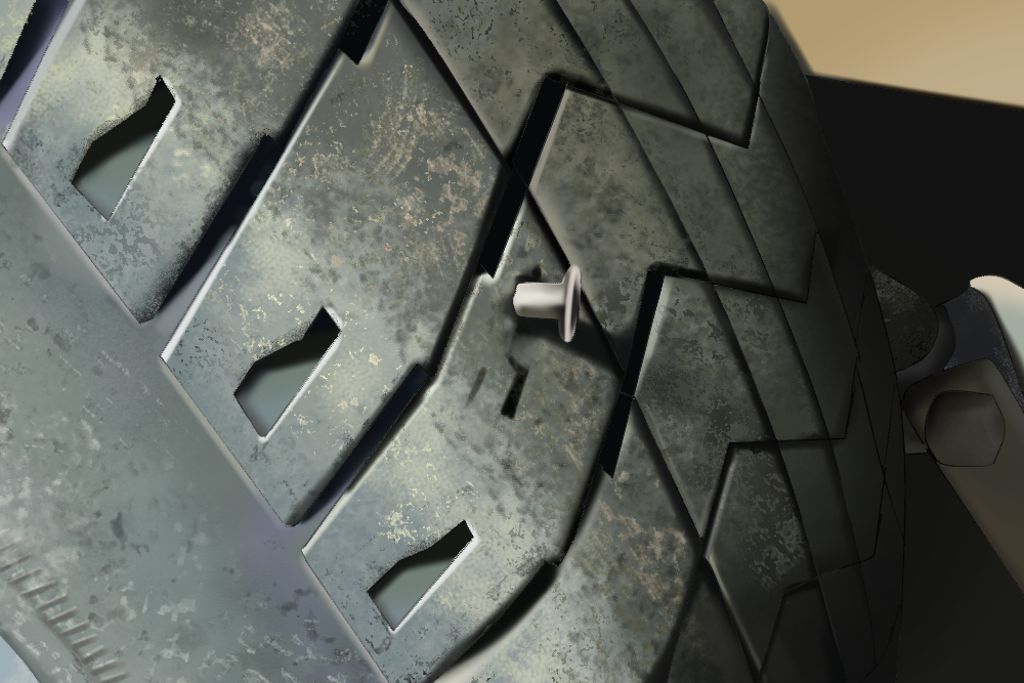
Improper fitting can damage the tire bead. In this case, the tire will lose its geometry and sit on a disc with a bevel, “eights” will be visible during rotation, and the driver will feel vibration while driving. It is impossible to repair this defect, the wheel must be changed as soon as possible, otherwise there is a risk of damage to the suspension.
How to Tires
adv.rbc.ru
adv.rbc.ru
Another season of changing shoes is approaching. And you may remember that on one of the tires after the last winter/summer there is a jamb - a small bump. I don’t want to run to the store for the sake of one new tire. We understand. Or maybe it looks even better if repaired?
Or maybe it looks even better if repaired?
Yes, not every wheel that encounters a nail, rebar sticking out of the ground or a sharp stone off-road is considered damaged. Everything, of course, depends on the scale of the damage and its location on the tire itself. Some are easily repaired, while others are simply impossible to do - the tire can only be sent to the trash.
A bulge on a wheel, referred to by drivers as a bump or bulge, is the most common tire sidewall defect. It appears due to a collision with an obstacle or after falling into a pit, more often at high speed. The threads of the sidewall carcass are easily damaged by impact, and the tire at this point can no longer hold the load and air pressure - swelling appears. A small bump sooner or later turns into a big one, and driving with such a defect is dangerous - the wheel can shoot at any moment. At high speed, this is fraught with loss of control, departure from the road and a rollover.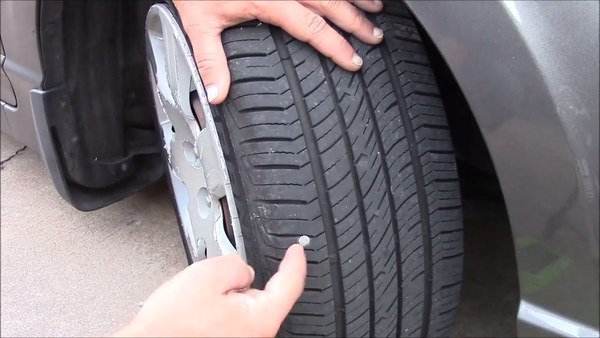
The quality of roads in Kazakhstan contributes to the appearance of bulges on tires
Some types of bulges are repairable, although this is a temporary measure. Not a single patch can restore the factory rigidity. Ideally, change the tire.
Special cord patches can extend the life of a tire with a herniation, even if the swelling has appeared on the tread. The sidewall is a different story. If the swelling appeared at a distance of more than 40 mm from the side, it can be repaired. If not, then the wheel needs to be replaced. Blisters on low profile tires are most often non-repairable.
For maximum safety when riding with a repaired bump, insert the tube. This is an inexpensive and reliable solution. On our market, you can find cameras made in China and Russia, the latter are slightly more expensive, but also of better quality.
The elimination of a side cut is a serious operation, therefore, as in the case of a bump, you will have to go to the professionals.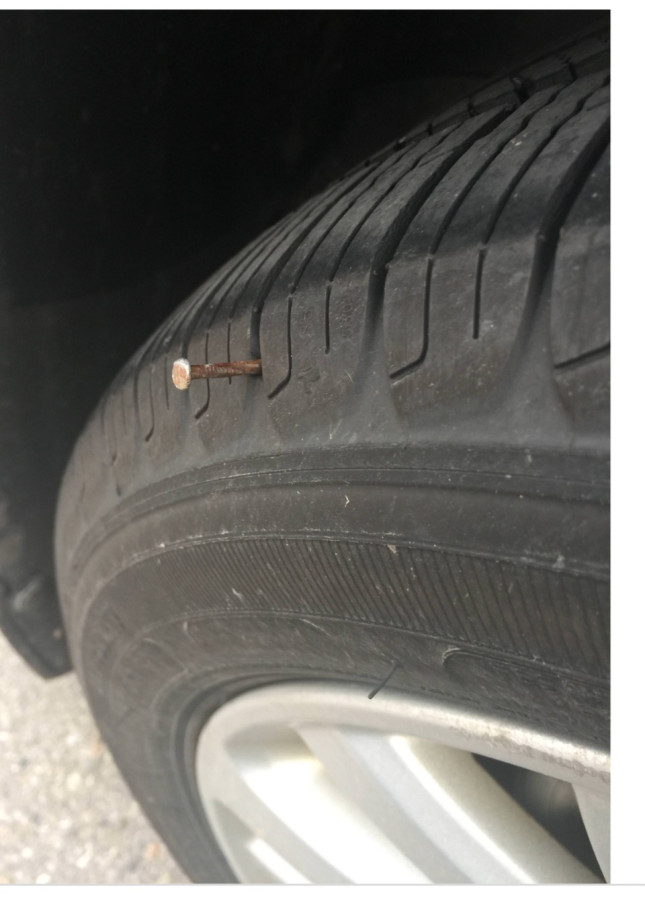 We need cord patches, fortunately in our time they are of different sizes and with a different number of layers. And if you do it wisely, then you can't do without special tools and vulcanization.
We need cord patches, fortunately in our time they are of different sizes and with a different number of layers. And if you do it wisely, then you can't do without special tools and vulcanization.
A cut, by the way, cannot be healed in all cases. If the gap is in the shoulder area of the tire, it is unlikely that anyone will undertake to repair it, since no guarantees can be given here. However, our Kulibins take on even the most difficult cases, cutting out parts of the sidewalls from the tires and even weaving the cord on their own.
Tire overhaul. We would not put such a wheel on ourselves
Low profile tires can be repaired, but more difficult. A tear in the sidewall is easier to seal on tires with a medium or high profile.
Sometimes a cut is confused with a pluck. This is when the outer layer of the sidewall caught on something sharp, a tear formed, but the frame itself remained intact. There is nothing wrong with that, although the drivers at the tire fitting company successfully repair the cut, for which they take it accordingly.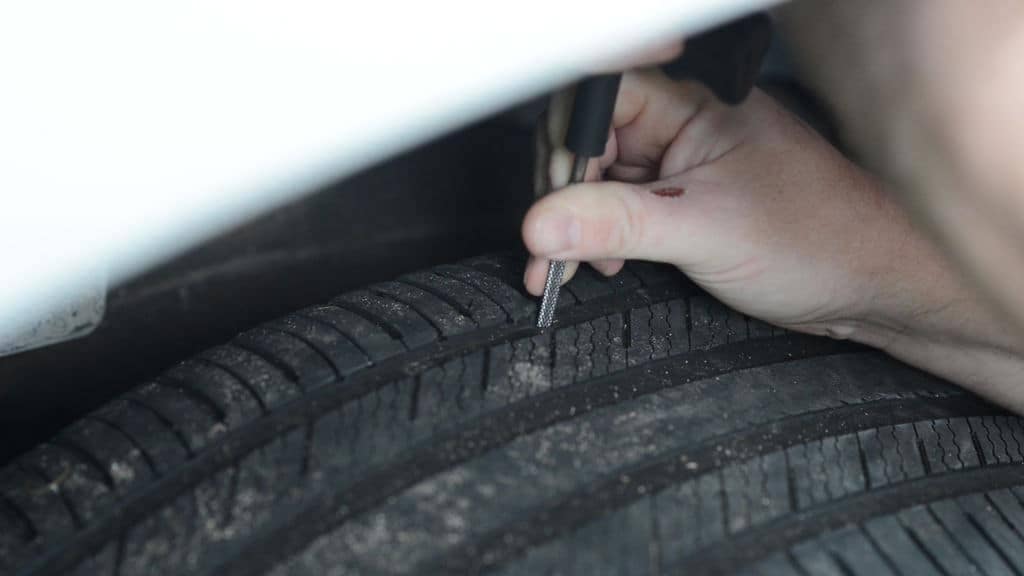
If a piece of rubber remains on the sidewall, then glue it with ordinary superglue (101st). If it came off, then it is better to cover it with raw rubber and vulcanize. Leaving the pluck bare is not recommended, because the tire carcass, often consisting of a metal cord, will quickly corrode.
In Europe, defective or used tires are perforated before being sent for scrap to prevent their resale and possible operation. But they don’t know that we have such holes on the sidewall patched once or twice
Cuts and hernias are not the only possible damage to the side of the tire. You can also spoil the side ring, in the process of changing shoes, for example. If it’s for garlic, then such a tire is already dangerous. Sooner or later, the tire pressure and the load in motion will start to squeeze the rubber off the rim - a wheel explosion can occur.
This ailment is repaired if the wire ring - the base - is intact.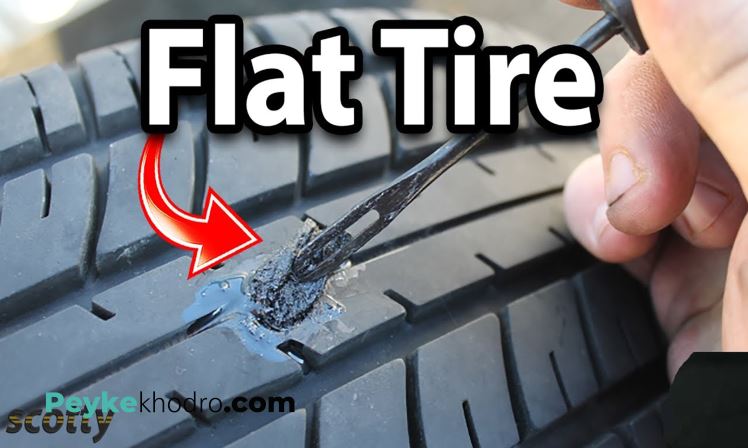 There are no special technologies and materials to correct this particular problem, but most often craftsmen use a two-component composition for chemical (also called cold) vulcanization. After mixing, the mass is pressed into a fat-free damage. Compound manufacturers recommend waiting 72 hours before mounting a tire. Of course, our masters do not pay attention to this condition - they put the tire right away. And it’s good if the wheel is flat because of this at night in the parking lot, and not on the road.
There are no special technologies and materials to correct this particular problem, but most often craftsmen use a two-component composition for chemical (also called cold) vulcanization. After mixing, the mass is pressed into a fat-free damage. Compound manufacturers recommend waiting 72 hours before mounting a tire. Of course, our masters do not pay attention to this condition - they put the tire right away. And it’s good if the wheel is flat because of this at night in the parking lot, and not on the road.
If the side ring tears are barely noticeable, but the wheel still deflates, then you can use a special liquid - a bead seal designed to seal a tubeless tire.
These seals have been used in motorsport for some time. In particular, in the American Formula D Drift Series, drivers used compounds to keep the tire on the rim even with minimal tire pressure. Now they are banned.
Pay attention to the left rear wheel of the Nissan Silvia S13. Due to too low pressure, it was literally taken off the disk under load
Every schoolboy has faced this problem when patching his bike tube after hitting something sharp. Repairing a car tire puncture with your own hands will also not be difficult even on the road. But for this you will need a pump (or compressor) and a universal tire repair kit with harnesses. All this is sold at any car market or gas station.
Repairing a car tire puncture with your own hands will also not be difficult even on the road. But for this you will need a pump (or compressor) and a universal tire repair kit with harnesses. All this is sold at any car market or gas station.
Repairing a tire on the side of the road with harnesses
The process is simple. If we are talking about the front wheels, then in most cases the wheel can not even be removed, it is enough to turn the steering wheel in the right direction, find the puncture site and carry out repairs. First, the hole is cleaned with a helical awl from the set. The tourniquet itself is smeared with glue and tucked into the eye of the awl, after which it is inserted into the tire hole. With a sharp movement, the tool is removed, and the tourniquet remains in place and clogs the hole. The tails are cut with a knife, but not at the root, it is recommended to leave about 20 mm. The tire is inflated and checked.
Sometimes a nail or self-tapping screw clogs the hole by itself, remaining in it. If you see a hat in a tread, do not rush to pull it out. While the pressure is holding, move to vulcanize. And sometimes they drive with a screw in a tire for weeks.
If you see a hat in a tread, do not rush to pull it out. While the pressure is holding, move to vulcanize. And sometimes they drive with a screw in a tire for weeks.
Repair of a puncture at a tire shop
Punctures are also repaired with harnesses at a specialized service, although among professionals such repairs are not considered long-term. After a few months, the flagella dry out and can let air through. There are more advanced methods like cold and hot vulcanization. The latter is more reliable. In this case, the hole is sealed with an elastic patch, and the funnel from a foreign object is filled with a special compound. After that, a vulcanizer is put on the tire, it heats up the rubber and solders it.
In addition to the plaster, the puncture is also repaired with special cord fungi. Craftsmen process the puncture site: drill it and treat the surface with a tool to roughen it. Then the repair area is lubricated with glue (it is also called cement) and a fungus is introduced.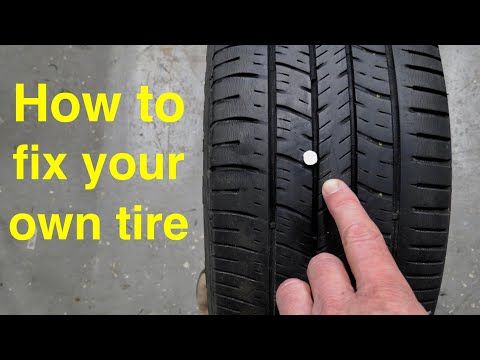 This is done from the inside of the tire. The cap of the fungus is rolled, and the excess legs are simply cut off from the outside.
This is done from the inside of the tire. The cap of the fungus is rolled, and the excess legs are simply cut off from the outside.
Puncture repair with sealant
With the advent of tubeless wheels, and later run flat tires, many automakers began to abandon spare wheels. Instead, repair kits with compressors are supplied with the machines. A repair kit is essentially a bottle of pressurized sealant. Later, such spray cans began to appear on the shelves of ordinary car dealerships.
This method has not taken root in the CIS, because the condition of the roads makes it necessary to have at least a stowaway in the kit, but it can also be considered as a method of repair on the road.
The car must be jacked up and sealant must be pumped into the damaged wheel through the nipple. Next, you should spin the wheel, then pump it up, lower the car and drive a few hundred meters. If the tire tightness has not been restored, repeat the procedure.
If the tire tightness has not been restored, repeat the procedure.
For commercial vehicles, cutting the tread with a special device (regrower) is a common thing. Moreover, such tire retreading is provided by the factory (marked REGROOVABLE on the sidewall) to increase the service life. But there are entrepreneurs who undertake to deepen the grooves in tires for passenger cars. But they are not intended for such an operation. Often used tires for sale are “refreshed” in this way. Be careful!
What is the threat?
The worst option is that the retreaded tire will shoot out on the road, as the master can damage the undertread layer when deepening the grooves. Such a tire will not be able to hold pressure at some point. There will be a boom! At best, the tire will indeed last a little longer, but is the game worth the candle? We think it's not worth it.
How is cutting made?
A regrower is used to cut the tread.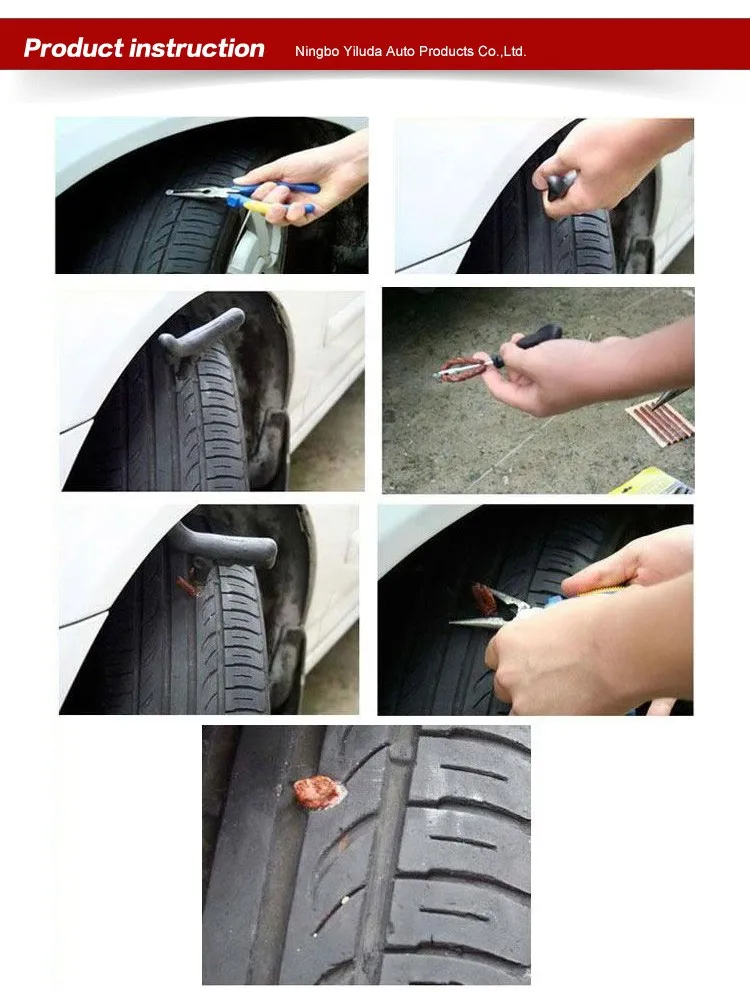 Roughly speaking, this is a large soldering iron with interchangeable tips of various shapes. It goes through rubber like a knife through butter.
Roughly speaking, this is a large soldering iron with interchangeable tips of various shapes. It goes through rubber like a knife through butter.
If the tire is for passenger cars, then it is worth taking on a regrower only in one case - when part of the tread pattern was welded with "new" rubber during repair. This is where threading comes in handy in order to restore the grooves and symmetry of the tread.
Vehicle operation is prohibited if:
- tires have a residual tread height of less than 1.6 mm;
- tires have punctures, cuts, ruptures that expose the cord, as well as delamination of the carcass, delamination of the tread and sidewall;
- tires in size or load capacity do not match the car model;
- tires of various sizes, designs (radial, diagonal, chamber, tubeless), models, with different tread patterns, winter and summer, studded and non-studded, new and restored, are installed on one axle of the car;
— Tires retreaded according to the second repair class are installed on the front axle.